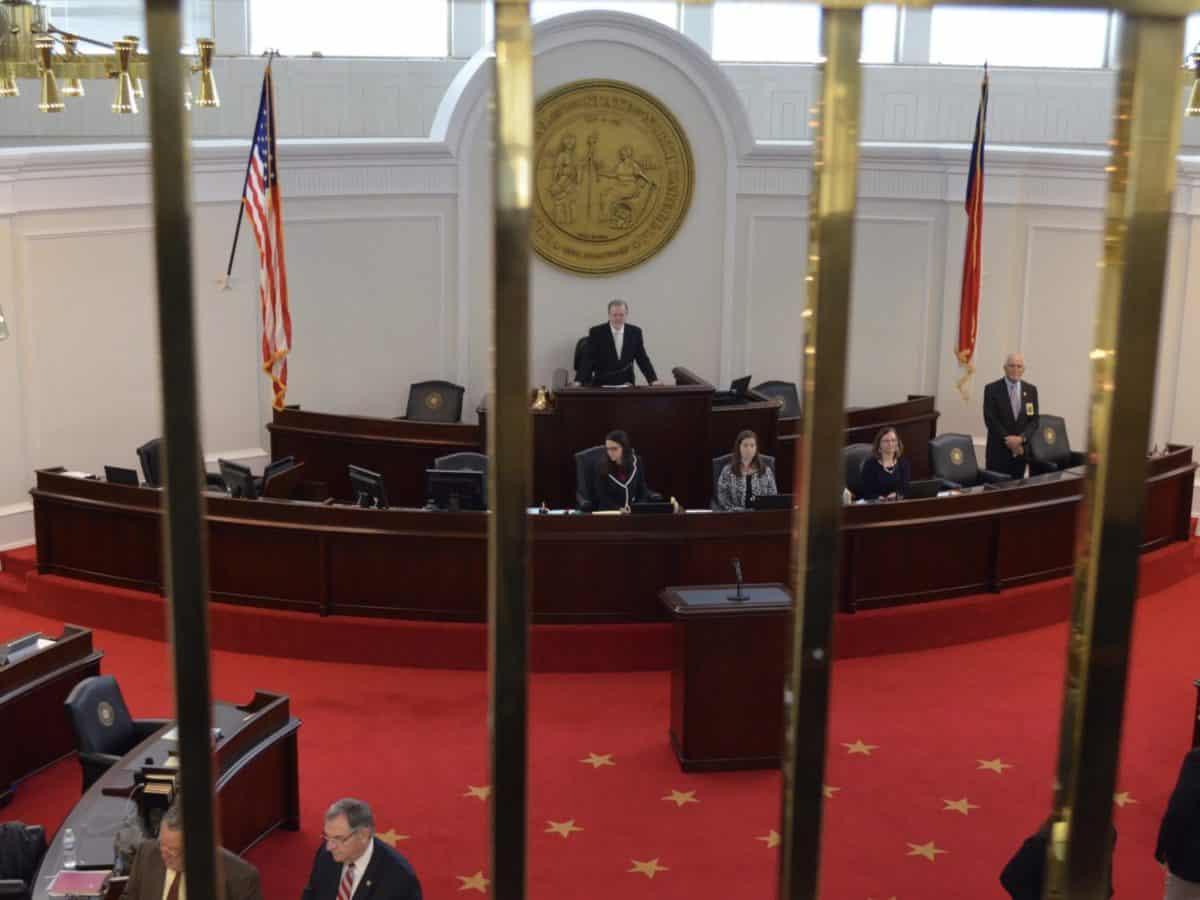

|
|
President Pro Tem Sen. Phil Berger, R-Rockingham, announced Wednesday the filing of Senate Bill 406, titled “Choose Your School, Choose Your Future.”
You can find the bill here.
The press release says the bill, if enacted, would be the “largest expansion of school choice” since the state enacted the Opportunity Scholarship program 10 years ago. The program helps families who make below a certain amount of income pay tuition and fees at qualifying nonpublic schools, according to the N.C. State Education Assistance Authority, which administers the program.
The bill was introduced by Senate Education Committee Chairs Senators Michael Lee, R-New Hanover, and Amy Galey, R-Alamance, and Senate Appropriations on Education/Higher Education Chairwoman Sen. Lisa Barnes, R-Nash.
School districts — whose state funding is tethered to average daily membership, a measure of enrollment — could lose students at a moment in time federal funds from COVID-19 are sunsetting and they are addressing learning loss.
In other states where significant policy changes are implemented that could impact ADM, stabilization funds have been provided for districts. This bill does not appear to include such funding.
The bill, according to the press release, “removes the income eligibility requirements for the Opportunity Scholarship program, and instead awards scholarships on a sliding scale. Household income would determine the amount awarded, ensuring families that need the most assistance receive the largest scholarships.”
Here is the description of the sliding scale included in the press release:
Children in households with an income at or below the amount required to qualify for free and reduced lunch — $55,500 for a family of four — would receive up to 100% of the average state per-pupil allocation from the prior fiscal year, for a maximum award of $7,213 in FY 2023–24.
Children in households with an income from 100% to 200% of the free and reduced lunch threshold — maximum $111,000 for a family of four — would be eligible for a maximum award of 90% of the average state per-pupil allocation from the prior fiscal year, for a maximum award of $6,492 in FY 2023–24.
Children in households with an income from 200% to 450% of the free and reduced lunch threshold — maximum $249,750 for a family of four — would be eligible for a maximum award of 60% of the average state per-pupil allocation from the prior fiscal year, for a maximum award of $4,328 in FY 2023–24.
All other students would be eligible for a maximum award of 45% of the average state per-pupil allocation from the prior fiscal year, for a maximum award of $3,246 in FY 2023–24.
In the bill, you can see the increase in appropriations:


This 2022-23 school year the appropriation is $94,840,000. If enacted, funding would increase to $176,540,000 for the school year starting in August. In 2032-33, total funding would increase to $509,540,000 (note this amount is in the bill text, but not the chart).
Democratic Gov. Roy Cooper has proposed freezing Opportunity Scholarships.
The press release said the program is popular among North Carolinians.
“A recent poll found that 68% of North Carolina voters support expanding Opportunity Scholarships,” the press release said. “The same poll found that 50% of registered Democrats and 62% of Republicans strongly support expanding the program.”
While polling may show public support for Opportunity Scholarships, it is important to note demand has been lower than anticipated. Renewal rates also provide insight into support for the program.
A provision of the bill would allow the N.C. State Education Assistance Authority to contract for up to $500,000 “with a nonprofit corporation representing parents and families for outreach and scholarship education and application assistance for parents and students.”
Learn more about the current program here.
In 2022-23, there are 25,429 students availing themselves of this funding across North Carolina: 8,964 are new to the program this school year. The amount of scholarships in 2022-23 totals $131,913,162. There are 544 schools across the state with students who receive this funding.
Here you can see overtime how many students received funding and the total amount by year:
| 2014-15 | 1,216 | $4,635,320 |
| 2015-16 | 3,682 | $13,159,309 |
| 2016-17 | 5,624 | $21,760,837 |
| 2017-18 | 7,381 | $28,058,656 |
| 2018-19 | 9,651 | $37,988,912 |
| 2019-20 | 12,284 | $48,117,458 |
| 2020-21 | 16,042 | $61,469,705 |
| 2021-22 | 20,377 | $79,467,926 |
| 2022-23 | 25,429 | $131,913,162 |
Here is ethnicity and race data of students for 2022-23:


Here you can find the county-by-county impact of the program currently.
The current list of schools approved for direct payment from the program is here. In the rules — Part IV, .0400 (c) — you can see that homeschools are not included in the program.




